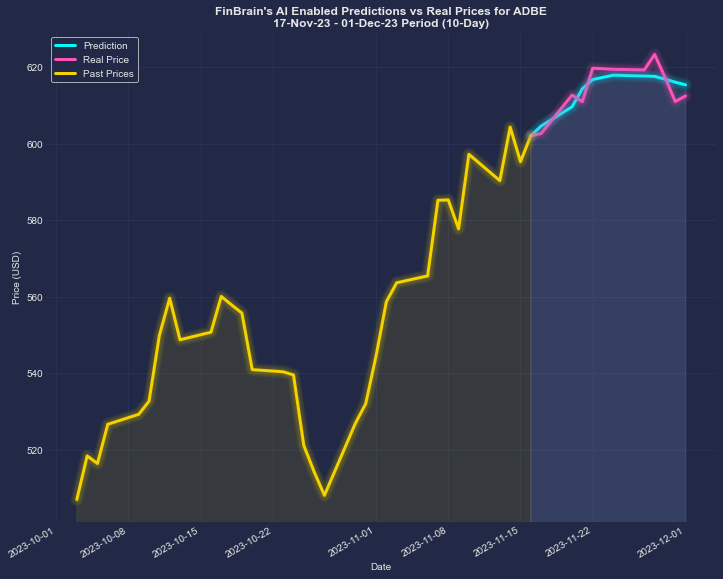1. Make use of multiple financial news feeds
Tips: Collect multiple financial data sources, such as the stock market, copyright exchanges, OTC platforms and other OTC platforms.
Penny Stocks Penny Stocks Nasdaq Markets OTC Markets or Pink Sheets
copyright: copyright, copyright, copyright, etc.
The reason: relying on one feed may cause inaccurate or untrue data.
2. Incorporate Social Media Sentiment Data
Tips: Make use of platforms such as Twitter, Reddit and StockTwits to analyze the sentiment.
For Penny Stocks: Monitor specific forums such as r/pennystocks or StockTwits boards.
copyright-specific sentiment tools such as LunarCrush, Twitter hashtags and Telegram groups are also helpful.
Why: Social Media can cause fear or hype particularly with speculative stocks.
3. Use macroeconomic and economic data to leverage
Include data like GDP growth and interest rates. Also include reports on employment and inflation metrics.
What’s the reason? The larger economic trends that influence the behavior of markets provide context to price movements.
4. Use on-Chain copyright data
Tip: Collect blockchain data, such as:
The activity of the wallet
Transaction volumes.
Exchange flows and outflows.
The reason: Onchain metrics provide an exclusive insight into market behaviour and investor behavior.
5. Incorporate other data sources
Tip: Integrate unconventional data types, such as:
Weather patterns in the field of agriculture (and other fields).
Satellite imagery (for logistics or energy).
Web traffic analysis (for consumer sentiment).
Why it is important to use alternative data to alpha-generation.
6. Monitor News Feeds & Event Data
Use NLP tools to scan:
News headlines
Press releases
Announcements regarding regulatory issues
News is a potent trigger for volatility in the short term and therefore, it’s important to invest in penny stocks as well as copyright trading.
7. Track Technical Indicators Across Markets
Tip: Diversify technical data inputs by incorporating several indicators:
Moving Averages
RSI (Relative Strength Index)
MACD (Moving Average Convergence Divergence).
Why is that a mix of indicators can improve the accuracy of predictions. It also helps to avoid over-reliance on any one signal.
8. Include both historical and real-time Data
Tip Combining historical data for backtesting as well as real-time trading data.
The reason is that historical data validates strategies, while real-time market data adjusts them to the market conditions at the moment.
9. Monitor Regulatory Data
Keep up-to-date with new tax laws, changes to policies and other important information.
Keep an eye on SEC filings on penny stocks.
Watch government regulation and track the adoption of copyright and bans.
Why: Regulation changes can be immediate and have a significant impact on market changes.
10. Make use of AI to cleanse and normalize Data
AI tools are useful for preprocessing raw data.
Remove duplicates.
Fill in the gaps with missing data.
Standardize formats among many sources.
The reason: Clean, normalized data ensures your AI model is performing at its best without distortions.
Make use of cloud-based data integration software
Tip: Make use of cloud-based platforms such as AWS Data Exchange, Snowflake, or Google BigQuery to aggregate data effectively.
Cloud solutions make it easier to analyse data and combine different datasets.
By diversifying data sources increases the durability and adaptability of your AI trading strategies for penny copyright, stocks and more. View the top stock analysis app info for site advice including ai in stock market, ai copyright trading bot, ai stock trading, best ai trading app, penny ai stocks, best ai trading bot, trading ai, trading with ai, trade ai, coincheckup and more.

Top 10 Tips To Monitor The Market’s Tempers Using Ai For Stock Pickers, Predictions, As Well As Investments
Monitoring market sentiment is vital for AI-powered predictions, investments and selecting stocks. Market sentiment has a significant impact on the prices of stocks as well as market developments. AI-powered tools can analyze vast amounts of data to extract signals of sentiment from a variety of sources. Here are the top 10 tips to make use of AI to analyze market sentiment for stock picking:
1. Natural Language Processing can be utilized to analyze Sentiment Analysis
Tip: To assess the sentiment of social media users, use AI-driven Natural Language Processing techniques. These are able to analyse reports on earnings, news articles blogs, and other financial platforms.
Why: NLP allows AI to quantify and understand the emotions, opinions, and market sentiment expressed through non-structured texts. This allows for real-time analysis of sentiment that could be utilized to guide trading decision-making.
2. Monitor Social Media and News to get updates in real Time
Tips: Make use of AI algorithms to scrape information from live social media platforms, news platforms and forums in order to observe shifts in sentiment associated with market or stock events.
Why: Social media, news and other information sources could quickly affect the market, specifically volatile assets such as the penny share and copyright. Emotion analysis in real time can provide practical insights for short-term trading choices.
3. Machine Learning and Sentiment Analysis: Combine the Two
TIP: Use machine learning algorithms to predict the future trends in market sentiment by analyzing past data.
The reason: AI can predict sentiment changes through the use of patterns learned from historical stock data and sentiment data. This provides investors with an advantage in predicting price changes.
4. Combining Sentiment and Technical and Fundamental Data
TIP: To design a comprehensive investment strategy Combining sentiment analysis along with technical indicators such as moving averages, RSI and fundamental metrics like earnings reports, P/E, or earnings ratios.
The reason is that sentiment data is a complementary layer to technical and fundamental analyses. Combining all these variables improves AI’s ability make informed and well-balanced predictions.
5. Changes in the mood of employees in earnings reports and other important events
Tip: Use AI to monitor sentiment shifts before and after key events like earnings reports, launches of products, or even regulatory announcements. These events can have a significant impact on stock prices.
These events often trigger major changes in the market sentiment. AI can spot changes in sentiment very quickly, and give investors insight into stock movements that could trigger by these triggers.
6. Concentrate on Sentiment Clusters to determine Market Trends
Tip: Cluster sentiment data for groups to identify market trends and segments.
What is Sentiment Clustering? It’s an approach to allow AI to spot new trends that may not be obvious from smaller data sets or individual stocks. It helps to identify industries and sectors where investors’ are more interested.
7. Stock evaluation by using Sentiment Scoring
Tip: Develop sentiment scores by studying forum posts, news articles and social media. These scores can be used to sort and rank stocks according to positive or negative sentiment.
The reason: Sentiment scores are an accurate measure of the mood of the market towards a particular stock, enabling better decision-making. AI can refine scores over time, improving their predictive power.
8. Track investor sentiment on multiple platforms
Tip – Monitor sentiment across different platforms (Twitter, financial news websites, Reddit, etc.). It is also possible to cross-reference sentiments taken from a variety of sources to obtain a more complete view.
The reason: sentiment can be distorted on a particular platform. Monitoring investor sentiment across platforms will give a more precise and balanced view.
9. Detect Sudden Sentiment Shifts Using AI Alerts
Tip: Create AI-powered alerts which will notify you if there is a major change in sentiment about a particular sector or stock.
Why? Sudden sentiment shifts such as an increase in positive and negative mentions can lead to rapid price fluctuations. AI alerts can assist investors take action quickly before price changes.
10. Examine long-term trends in sentiment
Tip: Use AI to study the long-term trends in sentiments of companies, stocks, and the broader market.
What is the reason: Long-term sentiment indicators can reveal stocks with a promising future or early indicators of risk that are emerging. This broader perspective complements short-term sentiment indicators and could help guide long-term investment strategies.
Bonus: Combine Sentiment with Economic Indicators
TIP: Combine sentiment analysis and macroeconomic indicators, like GDP growth or inflation data to determine how economic conditions impact market sentiment.
The reason is that economic conditions across the board influence the sentiment of investors. Stock prices are directly affected by these conditions. AI offers more in-depth insights into market dynamics by integrating sentiment with economic indicators.
By implementing the tips that have been mentioned above, investors can successfully make use of AI to analyze, monitor and forecast market sentiment. This will enable them to make accurate and informed predictions and investment decisions, and more educated stock choices. Sentiment analysis offers an unmatched, real-time layer of insight that goes beyond traditional analysis, helping AI stock analysts navigate complicated market conditions with greater accuracy. Take a look at the recommended extra resources for website recommendations including ai copyright trading, using ai to trade stocks, ai trading software, ai trade, copyright ai trading, stock trading ai, smart stocks ai, trading with ai, artificial intelligence stocks, ai penny stocks to buy and more.

Leave a Reply